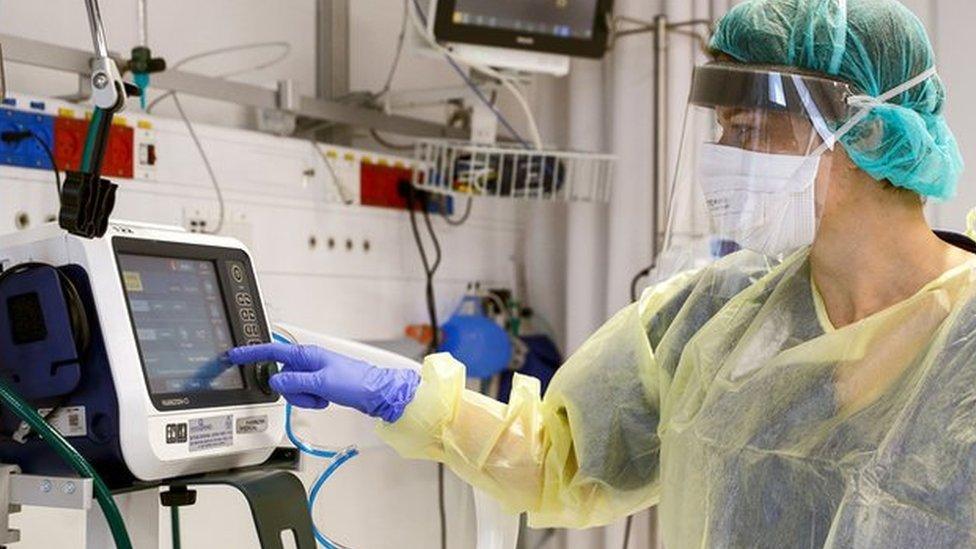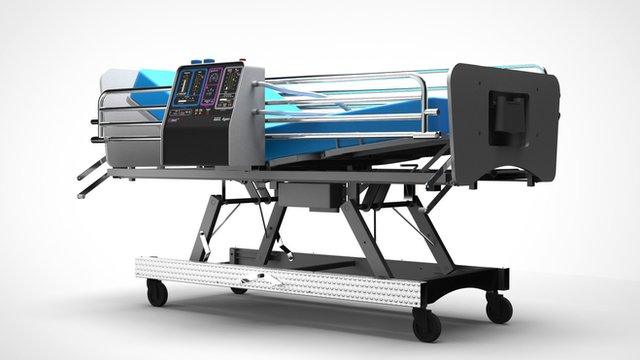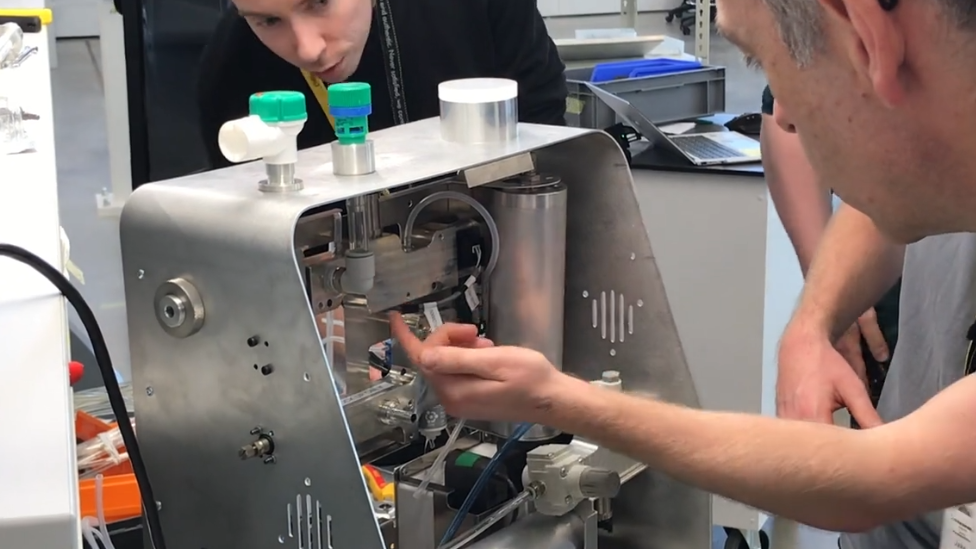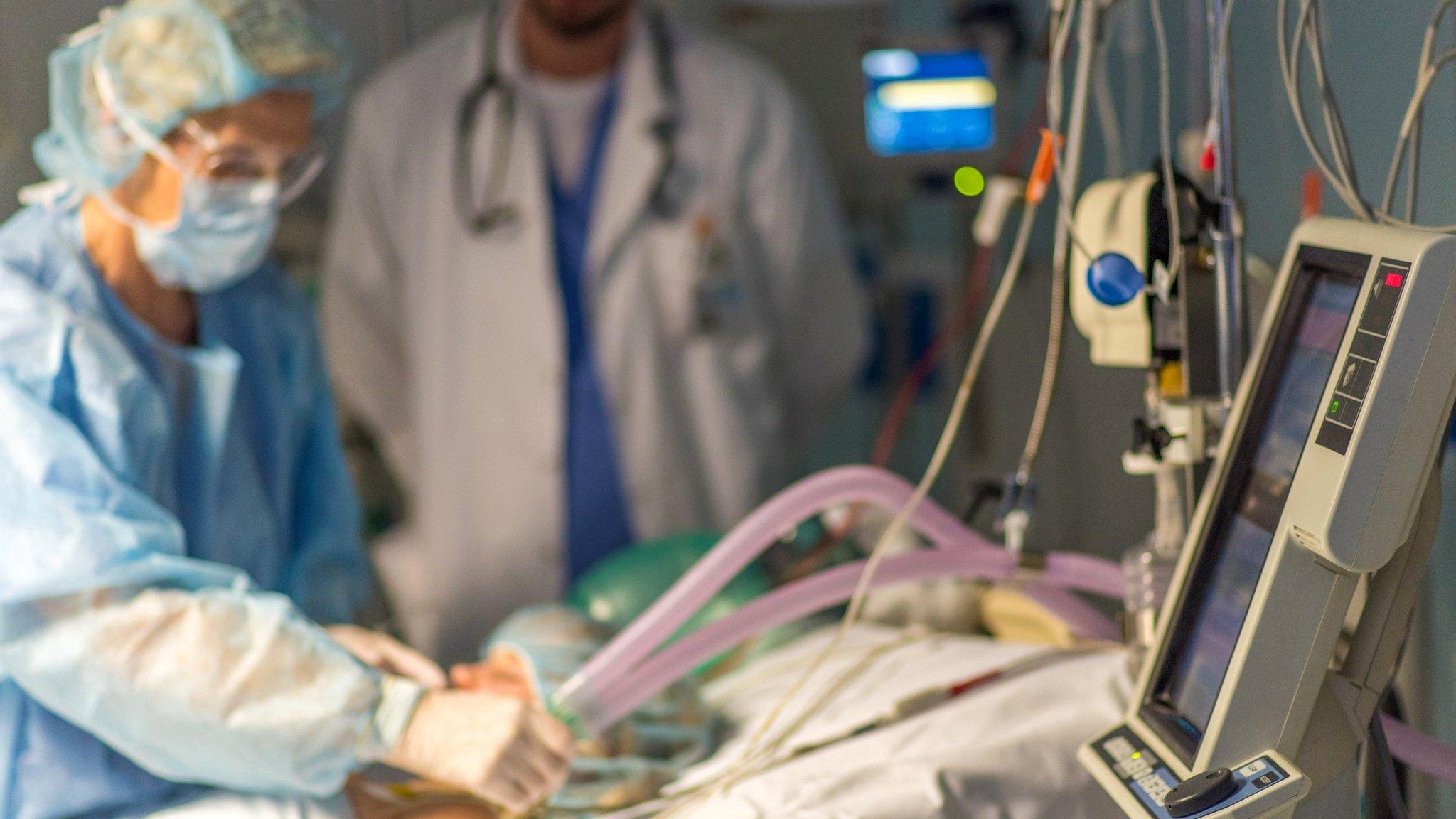Coronavirus: NHS well stocked for ventilators this winter
- Published

The NHS now has 30,000 ventilators that can help people breathe if they are very unwell with coronavirus.
That is about one for every 2,200 people in the UK - many more than are likely to be needed this winter.
Hospitals in England had 7,400 of the machines at the start of the pandemic, a report reveals, external. And the government spent £569m to secure more.
The National Audit Office says ministers prioritised speed over cost but used taxpayers' money responsibly.
Currently, there are 2,049 coronavirus patients in hospital in the UK.
And 297 of those are on ventilators.
Ventilator challenge
When coronavirus first struck UK shores, experts estimated the NHS could be overwhelmed with Covid-19 patients and would need 90,000 beds with ventilators to cope.
In response, the government set about buying up as many machines as possible.
And it encouraged UK manufacturers to make new ones, launching its Ventilator Challenge.
The estimate of ventilators needed was later revised down - to 17,500 in England.
But the government had already signed contracts with suppliers and paid money up front, the NAO report says.
Although, about £36.3m of this money has been recovered by cancelling orders and selling components brought in preparation for manufacture back into the wider supply chain.
The report also says:
The government faced growing competition buying ventilators on the world market and usually had to pay up front, and in some cases more than typical market rates, accepting the risk products may be unsuitable
In one such case, 750 ventilators, bought for about £2.2m, were withdrawn from use following feedback from clinicians
Established NHS suppliers were paid an average of £20,000 for each of the 2,200 new intensive care unit mechanical ventilators, while another 5,900 were bought from new suppliers for about £30,100 apiece
The Cabinet Office sought assurance over suppliers' costs, with input from the Ministry of Defence's Cost Assurance and Analysis Service
At the spring peak of coronavirus, 6,818 of 10,900 ventilators available across the UK were being used to treat patients in England.
And by 16 September, about 2,150 of the extra ventilators bought or built had been distributed to NHS trusts.
The remainder are in storage in warehouses, including a facility in Donnington owned by the Ministry of Defence.
The government has also bought 17,800 other, non-invasive oxygen therapy devices for the NHS, such as continuous positive airway pressure machines.
'Arm's length'
Labour MP Meg Hillier, who chairs the Public Accounts Committee, said the government had been "quick off the blocks" to increase the number of ventilators in the NHS.
"We were lucky the worst-case scenario didn't come to pass before the extra ventilators had arrived," she said.
"However, the NHS is now much better prepared for whatever happens next.
"The Department of Health and Social Care and the Cabinet Office have shown it's possible to work at pace and get results without writing a blank cheque.
"In this case, they kept the chancers at arm's length and have set a benchmark for procurement during the pandemic."
Prof Derek Hill, an expert in medical devices from University College London, said: "In normal times, more than £500m spent on unused medical equipment would be seen as a massive waste of tax payer money, but in the context of Covid, and risk mitigation, the National Audit Office is not critical of the programme."
A government spokeswoman said: "The NHS now has access to over 30,000 mechanical and 15,000 non-invasive ventilators. This is more than three times as many as it had at the start of the pandemic so we are well prepared to meet any future need."
- Published16 April 2020

- Published24 April 2020

- Published17 March 2020
